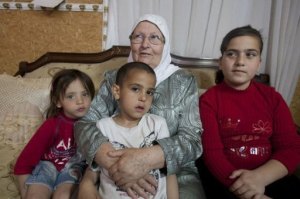
Beijing at night
On the first night of Passover as the sun moves around the world Jews from all countries begin one after another to celebrate the seder. The particular way each family and group of friends celebrates differs from table to table, time zone to time zone. Yet we all tell the same story on the same night.
Beijing
In Tablet magazine Dan Levin talks about his seder in China. He writes
For most of the year, our Jewishness hovers in the background; our primary identity here is “foreigner.” But Passover forces us to confront our shared religious heritage—and how it resonates in a Chinese context. The Haggadah features tales of villains and heroes, tyranny and dissent, and when we distill the Seder’s morality play through the dark realities of China, it reads as subversive political commentary. After all, we are celebrating freedom in a country that is not free.
Katmandu
An Israeli chef and his crew prepared 900 chickens, tubs full of salad, and over a 1000 boiled eggs with the electricity going on and off. Over 1,100 people came from all over Nepal to attend the seder. Each year about 10,000 Israelis visit Nepal. The seder in Katmandu is one of three seders in Nepal. For more, see 1,100 Pounds of Matzah in the Himalaya Mountains .
Israel
Last year seder Gilead Shalit’s family marked the seder in the tent the family had erected outside of the prime minister’s house. This year for the first time in six years the family is celebrating Passover with Gilead Shalit in their own home.
Soldiers from the HaRuv brigade arrived expecting a festive seder meal. Instead they got cold matzah and salami. IDF kitchens must serve kosher food. The rabbi in charge of supervising the kitchen insisted that the planned meal be thrown out because it was improperly heated.
Several Russian Jewish oligarchs celebrated an unremarkable seder in a Jerusalem hotel this year, but the way they prepapred for the seder was anything but usual. The week before the seder they traveled 200 kilometer through the Aravah desert northward to Jerusalem accompanied by camels without their usual modern conveniences . The trip organizer told the Moscow Times that the journey presented “a serious spiritual and physical challenge to the particpants.”
Gilad Shalit’s family have left their tents, but the residents of Machpelach house in Hebron have just set up theirs. They were evicted the week before Passover by the IDF. The residents claim that they had bought the property fair and square and had the right to live in the house. The IDF says that property has been set aside for military use and they can’t be there. Their claims will be reviewed in the coming months. In the meantime as a protest they have set up a tent nearby and held their seder in the tent.
Four years ago Chef Alon Goren of the El Barrio restaurant in Tel Aviv realized that many of his staff were foreign workers who had no place to go for seder night. He invited them to the restaurant for a small seder. The next year he invited workers from restaurants run by friends. The third year the number of people coming to the seder grew so large that he could no longer hold it in his restaurant. He moved it to a villa owned by a high ranking police officer and friend of his. This year the seder was held in a Flamenco studio in south Tel Aviv. Describing the children at his seders Goren said “It’s just amazing. The kids who come speak Hebrew fluently. They’re Israelis! Their parents are from another world, but these youngsters are so Israeli. They know the songs, and they have such a good time,”.
Egypt
In Egypt was the seder that wasn’t. Every year since the 1979 peace treaty with Egypt, the Israeli embassy in Cairo has held a seder. This year the seder was canceled due to deteriorating relations with Egypt. Because of problems protecting staff, embassy personnel have been returning home to Israel each weekend . Because the seder fell on Shabbat this year, the ambassor was in Israel with his family rather than in Cairo.
Hungary
Ruth Ellen Gruber from Budapest writes:
At Pesach, I made a “seder crawl” that took me to the Bet Orim seder and two others on the first night and one additional seder on the second. I had been invited to all of them, and seder hopping was how I dealt with the dilemma of having to make a choice about which to attend. Each was a big communal affair for dozens of people, organized by one of Budapest’s plethora of different Jewish groups and congregations. They all took place in and around the city’s downtown old Jewish quarter, in venues ranging from a modern JCC auditorium to the formal dining room of a popular restaurant to a funky basement youth cafe.
United Kingdom
Angie Jacobs writes in the Times of Israel about the prepackaged McSeder plate in her local supermarket and the challenges she and her sister had with creating a seder plate that was acceptable to the vegetarians in the family.
USA, East Coast
At the Garden, spending Passover with Springsteen : Long Island resident Warren Rosen didn’t want to miss Bruce Springsteen’s opening concert at Madison Square Garden in lower Manhatten. Since there was no way to get from his Seder Table in Massapequa Park, to the Garden, Rosen decided he’d bring the Seder to Springsteen. He rented a room in a restaurant across the street from Madison Square Garden; printed up special Haggadot with Bruce Springsteen on the cover; and invited his friends. They began the seder with “Matzah Ball”, a song written by his wife and set to the tune of Springsteen’s song Wrecking Ball. When the seder was over, everyone crossed the street and went to the Springsteen concert.
College student Alan Meskin writes in the Forward about his family’s efforts to maintain their Russian roots duing the seder. Obviously there are Russian dishes at the meal, but more than that the seder has special meaning for Russian immigrants to the USA. He writes:
To Russian immigrants especially, the holiday is a moment when they can think about the recent attainment of independence from the former Soviet Union and how they were let go after years of oppression and hatred.
USA, Moab Desert, Utah
Several families gathered in the Moab desert in Utah for a day long pre-seder and seder program. In memory of the Jews having to walk their way out of Egypt, they began their pre-seder celebrations with a hike to the Corona Arch, a giant natural made stone arch, an hour long hike from the nearest road. At the arch they read the story of the Exodos from the Torah. After the reading, following Miriam’s example, women danced with tamborines. The group returned to their camp site to complete the evening with a traditional seder. The annual desert seder is lead by Reform rabbi, Jamie Korngold. Next year, she will leave leadership to someone else. Korngold plans to be in Jerusalem.
USA, West Coast
In the Los Angeles Jewish Journal a morrocan Jewish father describes how Arabic and his Morrocan heritage shaped his understanding of the seder and the world around him.
Growing up in a French-speaking Sephardic-Moroccan home in Los Angeles, my sisters and I were never taught that Arabic was the “language of the enemy.” That is, unless we considered our parents “the enemy” — they spoke it between themselves when they didn’t want us to understand what was being said. I have vivid memories of Judeo-Arabic being spoken in my home. … Throughout my upbringing, the first chant at the Passover seder that really made it feel like Pesach for all of us around the table sounded like this …. Although my parents are no longer alive, my family continues our Judeo-Arabic chanting at the seder. These chants continue to tell the story of Pesach — my Moroccan ancestors’ Pesach — to my children, in the original language of their ancestors.
For Gary Smith’s vegan family the shank bone was only the beginning of their problems with the traditional seder. None the less they found a way to adapt the seder to integrate both their connection to Judaism and their commitments as vegans. He writes in the Jewish Journal about their “veder” or a vegan seder:
Our veder is really not much different than most others except that as vegans and animal rights activists, we see animals as fellow innocent victims. We decide to include and remember the 10 billion animals who are killed for food each year in the United States, the hundreds of millions in vivisection laboratories, the animals enslaved in zoos, circuses, racetracks and water parks for human entertainment, and the millions killed for fur, leather, wool and silk. Although being vegan is still outside the mainstream, it is in no way a rejection of the values we grew up with. In fact, the very teachings of Judaism encourage us to question authority, protect those who are most vulnerable, and take action against oppression and injustice — qualities that are common, if not necessary, to vegans and animal activists.
Hawaii
And finally we reach Hawaii where blogger Lorraine Gershun writes about her family’s second night seder:
My husband and I set the table this afternoon for our second night Seder. When we finished I realized that we were both wearing our bathing suits. He was still in his board shorts from his morning surf session and I had just returned from the neighborhood pool after swimming some laps. “Now that is being Jewish in Hawaii I thought.”
Update: 2012-04-15, added stories about seder in Katmandu, Nepal and Moab Desert, USA.
Several families gathered in the Moab desert in Utah for a day long pre-seder and seder program. In memory of the Jews having to walk their way out of Egypt, they began their pre-seder celebrations with a hike to the Corona Arch, a giant natural made stone arch, an hour long hike from the nearest road. At the arch they read the story of the Exodos from the Torah. After the reading, following Miriam’s example, women danced with tamborines. The group returned to their camp site to complete the evening with a traditional seder. The annual desert seder is lead by Reform rabbi, Jamie Korngold. Next year, she will leave leadership to someone else. Korngold plans to be in Jerusalem.









 RSS
RSS